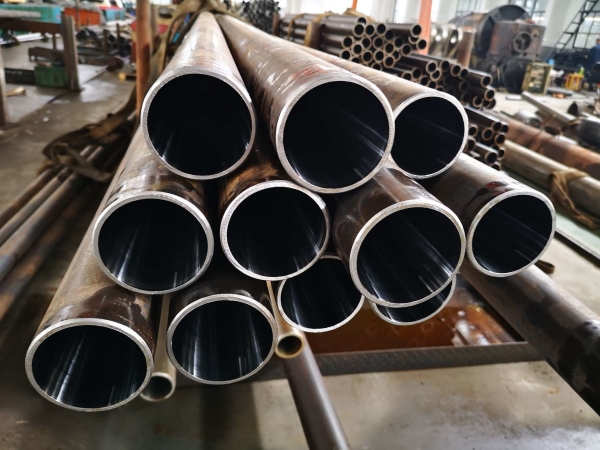Heat treatment is a critical process in the manufacturing of seamless steel pipes, as it helps achieve desired mechanical properties and performance characteristics. Here are 5 common heat treatment processes for seamless steel pipes.

Quenching + High-Temperature Tempering:
The steel pipe undergoes heating to the quenching temperature, transforming its internal structure into austenite. Rapid cooling at a speed exceeding the critical quenching rate converts the internal structure into martensite. Subsequent high-temperature tempering results in the transformation of the steel pipe structure into a uniformly tempered sorbite structure. This process not only enhances the strength and hardness of the steel pipe but also harmoniously integrates its strength, plasticity, and toughness.
Normalizing:
Following heating to the normalizing temperature, the internal structure of the steel pipe transforms entirely into an austenite structure. Utilizing air as the cooling medium, the subsequent heat treatment process yields various metal structures, such as pearlite, bainite, martensite, or their amalgamation. This procedure refines grains, evens out composition, alleviates stress, heightens the hardness of the steel pipe, and enhances its cutting performance.
Normalizing + Tempering:
After heating the steel pipe to the normalizing temperature, its internal structure transforms entirely into an austenite structure. Air cooling, followed by tempering, results in a steel pipe structure comprising tempered ferrite + pearlite, ferrite + bainite, tempered bainite, tempered martensite, or tempered sorbite. This process stabilizes the internal structure of the steel pipe, improving its plasticity and toughness.
Annealing:
The steel pipe undergoes heating to the annealing temperature, followed by a specific period of retention before slow cooling in the furnace and subsequent discharge. This process reduces the hardness of the steel pipe, increases its plasticity for subsequent cutting or cold deformation processing, refines grains, eliminates structural defects, and ensures a uniform internal structure and composition. This aids in enhancing the overall performance of the steel pipe or preparing it for subsequent processes, while also eliminating internal stresses to prevent deformation or cracking.
Solution Treatment:
The steel pipe is heated to the solid solution temperature, allowing complete and uniform dissolution of carbides and various alloying elements in the austenite. Swift cooling prevents the precipitation of carbon and alloying elements, resulting in a heat treatment process yielding a single austenite structure. This process serves to uniformize the internal structure and composition of the steel pipe, eliminate hardening during processing to facilitate subsequent cold deformation processing, and restore the corrosion resistance of stainless steel pipe.